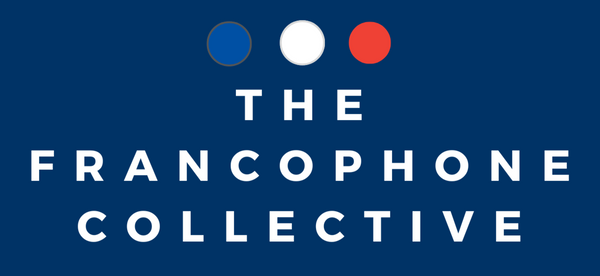About The Francophone Collective

The Francophone Collective is a boutique publishing house of French language educators and Anglophone editors dedicated to helping learners around the world master the French language with clarity, confidence, and style. We are based in Paris with a co-working space in the 5eme for physical editorial meetings.
We create books that meet you where you are — whether you’re just starting out, brushing up your grammar, or diving into French through stories, puzzles, or travel. Our titles span all CEFR levels (A1 to B2), and each one is crafted with care: sharp explanations in plain English, thoughtful progression, and a deep respect for your time and intelligence.
Founded in December 2023, we believe learning French should be both rigorous and rewarding. We blend pedagogy with storytelling, logic with creativity, and structure with warmth. Our growing catalogue includes grammar guides, vocabulary builders, fiction, phrasebooks, and more — each designed to help you make real progress with structured resources that bring French to life.
Our Editorial Process
Every book we publish at The Francophone Collective is the result of thoughtful collaboration between language educators, experienced editors, and designers who understand the nuances of learning. Our process balances academic rigour with editorial clarity, ensuring that each title serves learners with accuracy, purpose, and care.
1. Editorial Planning
Each book begins with a focused editorial meeting that brings together our French educators—many of whom are certified DELF examiners—and our anglophone editorial team. This session is where we define the pedagogical vision: what the book will teach, who it is for, and how each chapter will build toward mastery. We align on content priorities, CEFR level expectations, and the overall teaching approach, laying the foundation for a clear and structured learning experience.

2. Writing the Manuscript
Once the structure is in place, our French educators begin writing the book chapter by chapter. This phase is where their teaching experience comes to the forefront. Lessons are carefully crafted to ensure accuracy, relevance, and progression. Grammar points are explained with clarity, examples are practical, and vocabulary is chosen to reflect real-life usage. The content is always designed to meet learners where they are—while gently moving them forward.
3. Cover Design in Parallel
While the manuscript is being developed, our designer begins work on the cover. Inspired by the book’s tone and intended audience, the design process runs in parallel to writing, allowing ample time to create something both visually distinctive and aligned with our brand’s aesthetic. Each cover is created in-house, often through several iterations and feedback loops.
4. Handoff to English Editors
Once the manuscript is complete, the English editorial team takes over. Their role is to make sure every explanation, example, and instruction is easy to follow for an anglophone audience—without diluting the accuracy of the French. They read each chapter line by line, not only editing for language but also asking, Would this make sense to someone new to French?

5. Collaborative Editing
This stage involves detailed, back-and-forth conversations between editors and educators. We clarify meaning, fine-tune phrasing, and sometimes restructure explanations for greater clarity. The goal is always to preserve the integrity of the French while making it feel natural and intuitive for English-speaking learners.
6. Illustration and Pagination
Once the text is nearly final, the English editors begin working with our designer on illustrations and internal visuals. We determine what needs to be shown (charts, grammar structures, themed icons) and how to present it clearly. Pagination—the process of mapping out the book’s flow and structure—also begins at this stage, ensuring that content appears in a learner-friendly and visually coherent format.
7. Layout and Formatting
With text, visuals, and structure in place, the layout phase begins. This is where everything comes together: typography, spacing, imagery, headings, and page balance. We design our books to feel approachable and clean—never overwhelming—while remaining consistent across the series.

8. Final Review by French Educators
Once laid out, the book is returned to the French educators for a final pedagogical review. They check that everything still reflects their teaching intentions and that the formatting hasn’t altered meaning or clarity. Any necessary changes are noted before the book moves to final proofreading.
9. Final Proofreading
In the last editorial pass, our English editors conduct a meticulous proofreading round. This includes not only spotting typos or formatting issues, but also making sure that tone, clarity, and consistency are upheld from beginning to end.

10. Publication
With all edits complete, the book is finalised and prepared for digital upload to our publishing platform. Each title is carefully categorised, tested for display, and launched with a focus on discoverability—ready to reach learners wherever they are in the world.
11. Continuous Review
The work on each book does not end when it's published. The editors collect feedback and collate them to improve on future editions.
